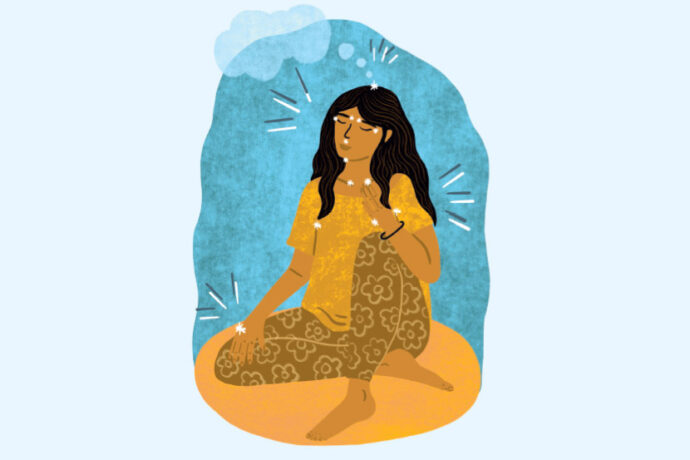
Discover how paying closer attention to transitional moments eases the process of shifting gears.
Do you struggle to get going in the morning? Or procrastinate rather than start a work project, household chore, or workout? Perhaps you have grand plans for how you’ll spend the evening, only to end up sitting on the lounge scrolling on your phone? If so, it might be time to rethink how you manage the transitions in your life.
The term “transition” can be defined as ‘the process or period of changing from one state or condition to another’. Most people move through myriad shifts each day – from place to place, task to task and from one emotional state to another.
For many, aware of it or not, the simplest of these transitions takes a great deal of mental and physical energy. Two of the most common reasons for this are tiredness and lack of motivation. Low energy levels can make it difficult to start the day and move efficiently between tasks within it, especially when tackling activities that feel challenging, such as exercise or life admin. Even when it comes to relaxation, decision fatigue gets in the way of entering a truly restful or creative state of mind.
The power of transition rituals
Thankfully, strategies exist to ease these daily shifts. Establishing routines is one of the most well-known, but there are other, more specific methods.
These include replicating natural transitional processes, anchoring transitions to specific rituals, and creating a menu of activities to choose from (see opposite and overleaf). They won’t always make for a day full of seamless transitions, but they will help to boost productivity and, perhaps more importantly, build in time to just be, rather than worrying about the next move.
How to move gently from one moment to the next

A fresh look at three everyday transitions and strategies that help to make moving between them easier:
1 Moving from night to day
There are many reasons why people struggle to get up and ready in the morning. It can be difficult to find the motivation to leave the comfort of a warm bed, especially when it’s cool or dark outside. Often, this is made harder if sleep hasn’t been fully restorative or if the tasks ahead feel overwhelming.
THINGS TO TRY:
- Get enough sleep. The recommended amount for adults is between seven and nine hours a night, though some operate brilliantly on less while others need more.
Different people need different kinds of rest – physical, mental, social, sensory, and creative. See if there’s an optimum amount of rest after which it’s noticeably easier to get going in the morning. - Shine a light. It’s natural to feel groggy upon waking – the body produces sleep-inducing chemicals at night that take between 60 and 90 minutes to dissipate in the morning. Exposure to light is one way to speed up the process. Leave curtains open a crack so light comes in with the dawn, or invest in a sunrise alarm clock that gradually emits more light into the room.
- Get moving. Getting oxygen circulating in the body eases the journey into alertness. Setting two alarms is one way to do this. The first could be next to your bed and have a snooze option, but the second is best placed across the room, so you have to physically get out of bed to switch it off.
2 Preparing for productivity
Whether it’s paid or unpaid, commercial, voluntary, or domestic, most people are engaged in a form of work every day. Making a start on productive tasks requires psychological as well as physical change, which demands self-motivation and discipline.
THINGS TO TRY:
- Clear the decks. Pay attention to your physical environment. Tidying up your workspace is a cognitively straightforward task that gives the brain time to shift into productive mode gradually and also makes your surroundings more inviting.
- Do your prep. Laying out exercise clothes or writing a to-do list the evening before a morning workout or busy day leads you into them more smoothly.
You might set 30-minute reminders on your phone ahead of medical appointments, meetings, a home yoga practice, or when it’s time to collect the kids from school.
This gives your brain a chance to adjust to the next task. - Introduce rituals. Formally marking the beginning of new activities with a straightforward routine designates your time more clearly and emphasises intentions. This could be lighting a candle or making a cup of tea before sitting down to a task, or putting on a favourite playlist before exercising.
3 Unwinding into calm
While the transition into rest might appear easy, moving into mindful relaxation can be challenging. This change often comes at the end of the day, when tiredness and decision fatigue cause confusion about what to do with the time available.
THINGS TO TRY:
Write it down. To combat decision fatigue, keep a list of your favourite relaxing activities somewhere that’s easy to see. This way, once you decide it’s time to unwind, you can check your list and choose something meaningful to do.
Maintain momentum. Once the decision is made, resist the urge to sit down until you’ve prepared yourself and your space for the next phase of the day. This is the time to grab a book, run a bath, make a cup of tea, or get out your paints.
Get comfortable. This could mean putting away anything work-related, changing into more comfortable clothing, or dimming the lights before beginning your chosen activity.
WORDS: Helen Hillman


















